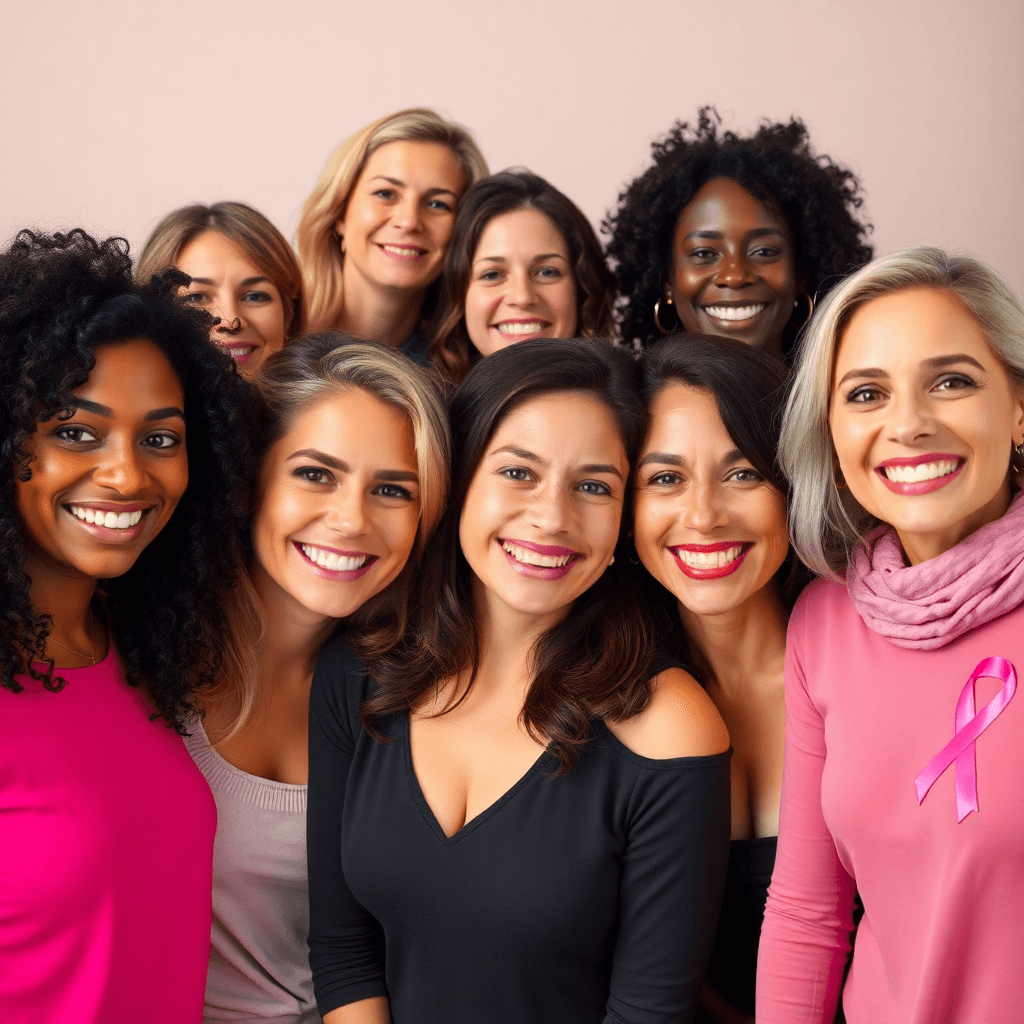Studies on women who identify as lesbian and breast cancer show...

July 8, 2025 by Joshua Gonzales
Breast cancer is a major health issue affecting women around the world, with about 2.3 million new cases diagnosed each year. Research shows that different demographic groups face unique challenges, especially within the lesbian and bisexual women community.
Studies on lesbian women and breast cancer reveal significant differences in risk factors, healthcare experiences, and outcomes when compared to heterosexual women. These disparities arise from specific biological, social, and systemic factors that shape their health journey.
Sexual minority women encounter particular obstacles in breast cancer prevention, diagnosis, and treatment:
- Limited Research Data: Historical exclusion from mainstream medical studies
- Healthcare Barriers: Discrimination and lack of culturally competent care
- Risk Factor Variations: Different lifestyle and reproductive patterns
Understanding these health disparities is crucial for creating targeted interventions and improving healthcare delivery. The connection between sexual orientation and breast cancer care exposes gaps in current medical practices, emphasizing the importance of inclusive research and specialized support systems for lesbian and bisexual women.
Breast Cancer Risk Factors Among Lesbian and Bisexual Women
Research reveals distinct health patterns among lesbian and bisexual women that can increase their breast cancer risk. These factors create a unique health profile requiring targeted prevention strategies.
Lifestyle-Related Risk Factors:
- Higher rates of obesity (36% compared to 27% in heterosexual women)
- Increased tobacco use – 2x more likely to be regular smokers
- Greater alcohol consumption patterns
- Lower physical activity levels
Reproductive Health Patterns:
- Delayed or no childbirth
- Reduced likelihood of breastfeeding
- Lower rates of oral contraceptive use
- Less frequent pregnancy-related protective factors
Studies indicate lesbian and bisexual women experience a 20-30% higher breast cancer risk compared to heterosexual women. The combination of behavioral and reproductive factors creates a compounded effect on cancer risk profiles.
Key Risk Indicators:
- BMI readings typically 4-6 points higher
- Smoking rates reaching 35% in some communities
- Average first pregnancy age 4 years later than heterosexual peers
- Reduced likelihood of regular gynecological care
These health disparities stem from complex social and cultural factors affecting lifestyle choices and healthcare access. Understanding these specific risk patterns helps healthcare providers develop targeted screening and prevention strategies for sexual minority women.
Healthcare Access Barriers for Lesbian and Bisexual Women
Lesbian and bisexual women face significant obstacles when seeking healthcare services, particularly in breast cancer screening and treatment. Various studies have highlighted these challenges, including those found on platforms like LesbianLife. Research shows that 56% of sexual minority women report negative experiences in medical settings, leading many to delay or avoid necessary care.
Key Healthcare Barriers:
- Discrimination during medical appointments
- Inappropriate questions about sexual history
- Assumptions about relationships and lifestyle
- Exclusion of partners from decision-making processes
- Misgendering and deadnaming in medical records
The lack of LGBTQ+ competency training among healthcare providers creates additional challenges. Many medical professionals report feeling unprepared to address the specific health needs of lesbian and bisexual patients, resulting in compromised care quality and reduced trust in the healthcare system.
Financial Obstacles
Financial obstacles present another significant barrier. Studies indicate that lesbian and bisexual women are:
- 2x more likely to be uninsured compared to heterosexual women
- More susceptible to housing instability
- Less likely to have employer-sponsored health benefits
- At higher risk of postponing medical care due to cost
These economic challenges, combined with discrimination experiences, create a complex web of barriers that directly impact breast cancer screening rates and treatment outcomes for lesbian and bisexual women. Healthcare facilities without explicit non-discrimination policies or LGBTQ+ inclusive practices contribute to these disparities, making it crucial for medical institutions to implement comprehensive cultural competency programs.
Quality of Life and Post-Diagnosis Care Disparities Among Sexual Minority Women with Breast Cancer
Studies on women who identify as lesbian and breast cancer show significant disparities in post-diagnosis experiences and quality of life outcomes. Research indicates distinct challenges in physical and psychological well-being among LGB breast cancer survivors:
Physical Health Impact:
- Higher rates of chronic pain reported
- Increased fatigue levels
- Greater difficulty managing treatment side effects
- Limited access to rehabilitation services
Mental Health Challenges:
- Elevated anxiety levels compared to heterosexual survivors
- Higher rates of depression
- Reduced social support networks
- Increased isolation during recovery
The lack of inclusive support services creates additional barriers for sexual minority women. Many support groups and survivorship programs lack understanding of LGB-specific needs, leading to:
- Reduced participation in group therapy sessions
- Limited access to specialized counseling
- Inadequate partner support resources
- Gaps in follow-up care coordination
Research reveals LGB breast cancer survivors face unique challenges with body image and intimate relationships post-treatment. These women report:
- Difficulty finding culturally competent reconstructive surgery options
- Limited guidance on intimacy concerns specific to same-sex relationships
- Inadequate partner inclusion in treatment decisions
- Reduced access to specialized psychological support
The impact extends beyond immediate treatment, affecting long-term survivorship outcomes. Data shows lower rates of routine follow-up care adherence among LGB survivors, potentially compromising their long-term health monitoring and cancer recurrence detection.
Challenges in Cancer Research Related to Sexual Orientation Data Collection Gaps
Cancer registries and research studies face significant limitations in capturing sexual orientation data, creating substantial knowledge gaps about breast cancer in lesbian and bisexual populations. Most medical records and cancer surveillance systems lack standardized fields for documenting sexual orientation, resulting in incomplete datasets that fail to represent LGBTQ+ experiences accurately.
Research shows that only 11.36% of cancer registries actively collect sexual orientation information, leading to:
- Incomplete understanding of breast cancer incidence rates
- Limited data on screening behaviors
- Missing information about treatment adherence
- Insufficient mortality statistics
The absence of comprehensive data collection methods creates a cycle of invisibility where lesbian and bisexual women’s specific health needs remain understudied and poorly understood. This gap affects the development of targeted interventions and evidence-based guidelines for sexual minority populations.
Current research methodologies often rely on:
- Self-reported surveys with small sample sizes
- Convenience sampling through LGBTQ+ organizations
- Retrospective studies with potential recall bias
These limitations highlight the urgent need for systematic changes in data collection practices. Healthcare institutions must implement standardized sexual orientation documentation protocols and train staff in collecting this sensitive information respectfully. Research institutions need to develop inclusive study designs that accurately capture the experiences of sexual minority women with breast cancer.
The integration of sexual orientation questions into national cancer databases would enable researchers to:
- Track disparities in cancer outcomes
- Identify unique risk factors
- Develop targeted prevention strategies
- Measure the effectiveness of interventions
Moreover, improving patient subgroup representation with real-world data is crucial for addressing these challenges effectively. By adopting more inclusive research methodologies, such as those suggested in this Duke Health Policy report, we can begin to fill these critical gaps.
In addition, embracing the recommendations outlined in this IntechOpen chapter could significantly enhance our understanding of the unique health needs of lesbian and bisexual women facing breast cancer. The integration of these insights into our healthcare system will not only improve patient outcomes but also ensure that every individual’s health needs are acknowledged and addressed appropriately.
It’s also worth noting that a deeper understanding of how to collect and use sexual orientation data effectively can be gleaned from resources like the one provided by the NCBI, which offers valuable insights into the complexities surrounding this issue.
Stigma and Discrimination Policies Impacting Care for LGB Patients with Breast Cancer
Healthcare stigma, a significant barrier for LGB breast cancer patients, manifests in multiple concerning ways:
- Delayed Care Seeking: Many LGB patients postpone medical visits due to past negative experiences or fear of discrimination
- Compromised Communication: Patient-provider relationships suffer when LGB individuals feel unable to disclose their sexual orientation
- Limited Support Systems: Partners may face exclusion from treatment decisions and hospital visits
These challenges are often exacerbated by stigma and discrimination policies in healthcare settings, which have created additional hurdles such as:
- Denial of routine screenings
- Restricted access to hormone-sensitive cancer treatments
- Limited options for fertility preservation
- Exclusion of same-sex partners from medical decision-making
Furthermore, the oncology care knowledge gap regarding LGBTQ+ experiences results in:
- Inadequate assessment of family cancer history
- Missed opportunities for genetic testing
- Limited understanding of psychosocial support needs
- Lack of appropriate survivorship care planning
Research indicates that healthcare providers often lack specific training in LGB health needs, leading to:
- Assumptions about sexual orientation
- Use of heteronormative language
- Failure to recognize unique risk factors
- Insufficient inclusion of chosen family members in care plans
These systemic issues compound existing health disparities and create barriers to optimal breast cancer treatment outcomes for LGB patients.
Breast Cancer Prevention Strategies Relevant to All Women Including Sexual Minorities
Studies on women who identify as lesbian and breast cancer show prevention strategies remain universal across sexual orientations. Essential preventive measures include:
1. Lifestyle Modifications
- Maintaining a BMI between 18.5-24.9 through balanced nutrition
- Engaging in 150 minutes of moderate physical activity weekly
- Limiting alcohol consumption to one drink per day
- Quitting smoking or avoiding tobacco products entirely
2. Screening Guidelines
- Annual mammograms starting at age 40
- Clinical breast examinations every 1-3 years for women 20-39
- Monthly breast self-examinations to detect changes
3. Culturally-Competent Prevention Education
- LGBTQ+-inclusive health materials and resources
- Support groups specifically designed for sexual minority women
- Healthcare providers trained in addressing unique concerns
4. Risk Assessment Tools
- Regular discussions with healthcare providers about family history
- Genetic testing when appropriate based on risk factors
- Personalized screening schedules based on individual risk profiles
Healthcare providers can enhance prevention efforts by creating welcoming environments that acknowledge diverse family structures and relationship patterns. This includes recognizing that lesbian and bisexual women may need additional support in accessing preventive services due to past negative healthcare experiences.
Research indicates tailored prevention strategies should consider the specific health behaviors and risk factors prevalent among sexual minority women while maintaining core prevention principles applicable to all women. Additionally, exploring diverse avenues for support, such as connecting with foreign women through mail order bride sites, can provide valuable emotional and social resources during such challenging times.
Conclusion
Studies on women who identify as lesbian and breast cancer show critical gaps in healthcare delivery and research that demand immediate attention. The path toward health equity requires:
- Implementation of mandatory LGBTQ+ cultural competency training for healthcare providers
- Development of inclusive screening protocols that acknowledge diverse family structures
- Creation of welcoming healthcare environments free from discrimination
Research priorities must focus on:
- Standardized collection of sexual orientation data in cancer registries
- Long-term studies tracking outcomes specific to sexual minority women
- Evaluation of targeted intervention effectiveness
The evidence points to a pressing need for systemic change. Healthcare institutions can transform breast cancer care by:
“Recognizing that every patient deserves culturally sensitive care tailored to their unique experiences and identities”
The time for action is now. By addressing these disparities head-on, we can work toward a future where all women, regardless of sexual orientation, receive equitable, comprehensive breast cancer care aligned with their specific needs and experiences.
FAQs (Frequently Asked Questions)
What are the unique breast cancer risk factors among lesbian and bisexual women?
Lesbian and bisexual women exhibit a higher prevalence of breast cancer risk factors such as obesity, smoking, and alcohol use. Additionally, reproductive differences including lower rates of biological children and later childbirth contribute to an increased breast cancer risk compared to heterosexual women.
What barriers do lesbian and bisexual women face in accessing healthcare for breast cancer?
Common barriers include discrimination and stigma within healthcare settings, lack of provider training on LGBTQ+ health issues, financial challenges like lack of insurance or homelessness, and overall healthcare access obstacles that negatively impact quality of care for lesbian and bisexual women.
How do quality of life and post-diagnosis care differ for sexual minority women with breast cancer?
Sexual minority women often report differences in physical and mental quality of life after a breast cancer diagnosis. They also experience reduced access to follow-up treatment and supportive care, which can adversely affect survivorship outcomes and long-term health.
Why is there a need for improved data collection on sexual orientation in breast cancer research?
Current deficiencies in collecting sexual orientation data hinder understanding of incidence, screening rates, treatment outcomes, and mortality among lesbian and bisexual populations. Improved research methodologies inclusive of sexual minority identities are essential to address these gaps.
How do stigma, discrimination, and policies impact breast cancer care for LGB patients?
Stigma and discrimination negatively affect patient-provider relationships. Policies allowing refusal of care based on religious beliefs exacerbate access issues for LGB patients. Additionally, gaps in oncology care knowledge regarding LGBTQ+ experiences lead to suboptimal treatment outcomes.
What breast cancer prevention strategies are relevant for lesbian and bisexual women?
General prevention measures such as tobacco avoidance, maintaining a healthy weight through diet and exercise, limiting alcohol intake, and regular screening tailored by age and risk factors are crucial. Emphasizing culturally competent education addressing the specific needs of lesbian and bisexual women enhances prevention efforts.
Written by
Joshua Gonzales
You may also interested in:

What does the Bible say about lesbian women?
Explore what the Bible says about lesbian women, focusing on scripture, context, and distinctions between attraction and behavior.
Why are straight women obsessed with lesbian TikTok?
Explore why straight women are drawn to lesbian TikTok, from curiosity and identity to authentic connections and community support.